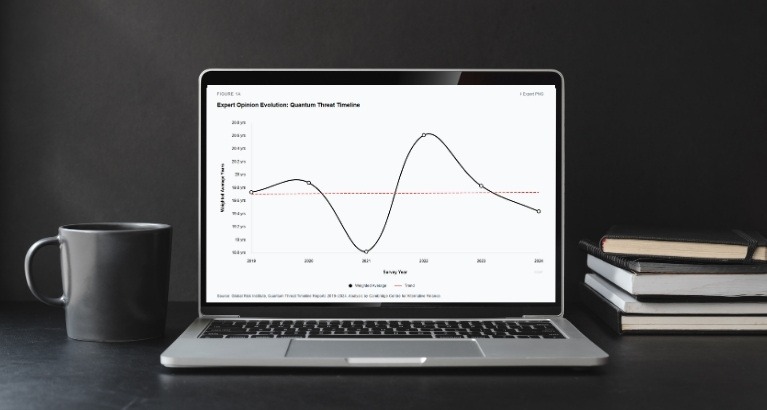Financial institutions have long acted as custodians of customer data, operating in siloed environments. That paradigm is now shifting. Open Banking and Open Finance are gaining momentum across the globe, altering how financial data moves through economies and unlocking new business models in the process.
Global momentum, diverse approaches
What began as a series of national regulatory initiatives has evolved into a global movement. According to the CCAF’s Global Open Banking and Open Finance Report, over 95 jurisdictions have now introduced frameworks in some form. Approaches vary – ranging from top-down regulatory mandates to market-led initiatives – but the direction of travel is clear: greater data sharing enabled by increasingly active regulatory engagement.
In the UK, adoption continues to rise, with 13% of the population and 18% of businesses now using Open Banking services. The UK’s National Payments Vision and the FCA’s recently published five-year strategy both position data sharing as central to the UK’s evolving financial infrastructure.
Brazil, meanwhile, has emerged as a leader in data sharing implementation. In 2024, its system registered over 42 million consents and saw 1.5 billion API calls per week – triple the volume of the previous year. In Asia-Pacific, Thailand’s ‘Your Data Initiative’ broadens the scope even further by extending beyond banking to insurance, digital lending, and even access to non-financial data.
The trajectory is not confined to financial services. The integration of energy, telecom, and other datasets is already underway in some jurisdictions, laying the groundwork for embedded finance to become seamlessly integrated into everyday non-financial customer journeys.
Tangible benefits for consumers and SMEs
The value proposition for consumers is compelling: increased transparency, better product comparisons, and personalised insights to support improved financial outcomes. Account aggregation reduces the cognitive burden of managing multiple financial relationships. Payment initiation services cut friction at the point of sale. Personal finance tools, powered by Open Banking APIs, help users make more informed decisions whilst Variable Recurring Payments (VRPs) can provide consumers with greater transparency, control and savings.
For SMEs, the impact could be transformative. Traditional underwriting models often fall short due to information asymmetries. Open Banking and Open Finance allows businesses to share real-time data, enabling more accurate risk assessments and potentially unlocking much-needed financing – a persistent challenge in many markets. Through the integration with cloud-based accounting, SMEs can obtain real-time insights into cash flow and lower transaction costs through Open Banking enabled payments.
Challenges and opportunities for banks and regulators
For financial institutions, open banking and open finance presents both challenges and opportunities. While incumbent banks can face rising competition with data sharing, for example in the context of much more seamless account switching, they can also gain new channels for distribution, service innovation and value creation. For instance, in an open finance environment, the banks not only can acquire customers from other banks and fintechs by offering superior products and services, but also can provide authentication-as-a-service by utilising customer identity attribute data via a premium API. The result perhaps is a new dynamic era of coopetition, where firms collaborate and compete through shared APIs and data exchange platforms.
Regulators, on the other hand, increasingly see open banking as a powerful lever to stimulate market competition and foster innovation. In some jurisdictions, policymakers also view robust data-sharing frameworks as an enabler of national competitiveness, attracting fintech investment and advancing financial inclusion. The empirical data has shown that countries that have established clear regulatory frameworks, adopted standardised APIs, and built strong governance structures are beginning to pull ahead in the global race towards open banking and open finance. Yet, despite this momentum, many jurisdictions continue to grapple with complex implementation hurdles. Technical limitations, policy and regulatory fragmentation, and supervisory gaps all present formidable barriers. At the same time, the challenge of designing commercially sustainable models for data sharing – and growing concerns around data privacy and protection – continue to act as persistent headwinds.
Data sharing as a key layer of digital infrastructure
Open banking and open finance are also increasingly seen within the broader context of digital public infrastructure (DPI) – the foundational systems that enable modern societies to function, from digital ID and payment rails to interoperable data-sharing protocols. When these elements are connected, they can create powerful network effects that reduce costs, expand access, and improve transparency.
India offers perhaps the most comprehensive example of DPI in action. Built on the Aadhaar identity system, the ‘India Stack’ integrates payments, digital signatures, and a data-sharing framework through its Account Aggregator ecosystem. The results have been transformative – from enabling the world’s largest biometric ID system to rapid digital payments adoption and expanded financial inclusion.
Therefore, despite challenges in implementing open banking and open finance and creating an Open Data Economy, the early signs and global trends are promising. Over the last few years, the conversation is shifting from questions of whether open finance is viable to how it can be implemented, governed, made interoperable, and deployed for efficiency and tangible benefit. For policymakers and industry leaders, the message is clear: data sharing through open banking and open finance is not just incremental change – it is a reimagining of the foundations of digital financial services.
Featured authors
Bryan Zheng Zhang
Co-Founder and Executive Director, Cambridge Centre for Alternative Finance
Pavle Avramovic
Head of Market & Infrastructure Observatory, Cambridge Centre for Alternative Finance
Related content
The Global Open Banking and Open Finance Report was published by the CCAF in November 2024.
The FCA’s 5-year strategy positions data haring as central to evolving financial infrastructure in the UK.
In 2024, Brazil’s Open Finance hit 42 million consents and 1.5 billion weekly API calls but still trails Pix in usage.
A version of this article was published in this Bracken column on 10 April in The Banker, a part of the Financial Times.
Related articles in this series
Read more articles from the CCAF Perspectives series.
Industry leaders face a choice: act now or risk the integrity of blockchain-based markets and digital currencies, says Wenbin Wu, Research Associate at the Cambridge Centre for Alternative Finance (CCAF), Cambridge Judge Business School. Here we reveal regulators’ and policymakers’ bridging roles for quantum-resilient blockchains, and the importance of collaboration by technologists, economists, and regulators in the quantum age of financial technology.
AI and technology
How can AI in finance realise its full potential?
Kieran Garvey, AI Research Lead at the Cambridge Centre for Alternative Finance (CCAF), and Bryan Zhang, Co-Founder and Executive Director of CCAF, explore why banks struggle to turn AI efficiency into growth.
AI and technology
Innovation to impact: technology, governance and regulation
As governments worldwide grapple with the accelerating pace of technological change, the central challenge is no longer technical but institutional: how to translate digital innovation into citizen-first outcomes at scale. The obstacles lie in execution – requiring effective governance, adaptive regulation, and institutional transformation. In this piece, Carlos Montes (Lead – Cambridge Innovation Hub for Prosperity), Montek Singh Ahluwalia (citizen-first public servant and economic reformer), and Pavle Avramovic (Head of Market and Infrastructure Observatory at the CCAF), examine how public institutions can move from policy ambition to real-world impact by building innovation-ready systems that prioritise citizens over processes





